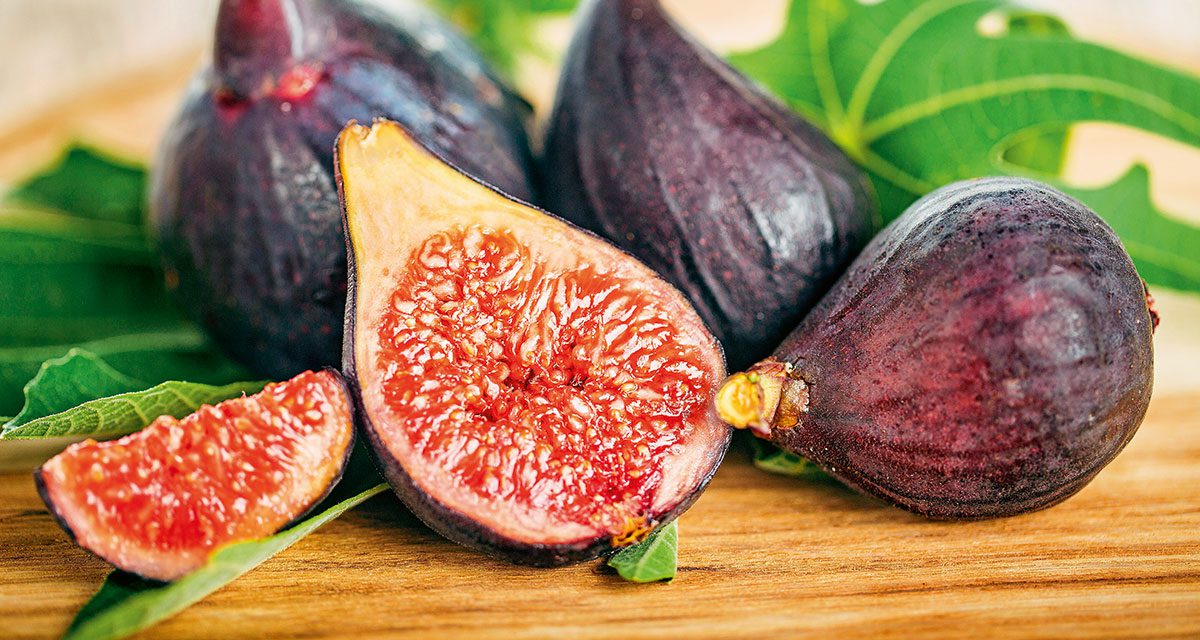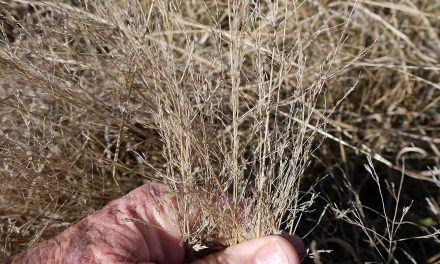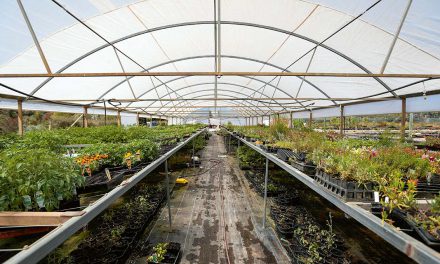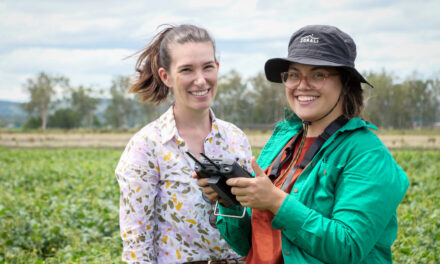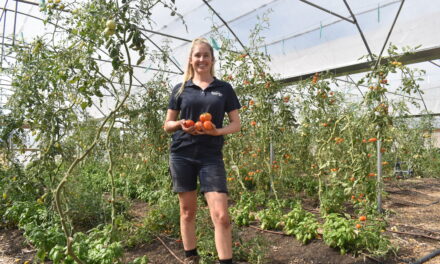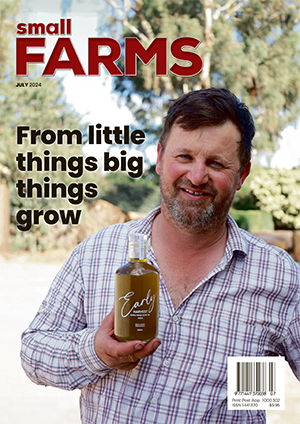Think figs and you think about delicious fruits, whether fresh, dried, glazed, in tarts or poached. Figs are high in vitamin C and fibre.
As a free bonus, fig trees provide dense shelter and garden shade.
Like our garden figs, native figs provide a host of benefits on properties — shade and shelter for stock and yards plus food for a whole range of insects, birds and fruit bats and possums.
Garden and Orchard Figs
High, fruit-producing backyard and orchard figs have all been introduced to Australia.
Edible figs are all varieties of Ficus carica, which has been cultivated for thousands of years.
It was first recorded as cultivated in southern Arabia in 2900 BC.
They produce more fruit when grown in well-drained, reasonably fertile soils.
These figs can be grown in many areas across Australia, but young trees may need frost protection.
They grow particularly well in Mediterranean climate areas.
Interesting facts:
- The fig flower is found on the inside of the fruit and is pollinated by a wasp. The female fig-wasp burrows into the fig, lays her eggs inside the flowers, transferring pollen from the previous fig as she does so. The tree somehow detects the presence of the egg and surrounds it with plant tissue. This provides the wasp larva (which hatches inside the fig) with food to grow and restart the cycle.
- Each fig is pollinated by its own exclusive wasp species.
- Avoid planting exotic figs (e.g. rubber plant — Ficus elastica) as they usually don’t produce fruit or set seed in Australia which denies wildlife a vital food source.
Pests and Diseases
Edible garden figs are affected by a range of pests and diseases such as:
- Root knot nematode which damages the fig tree roots causing trees to become stunted with yellow leaves and a lower fruit production. The only real answer is to plant nematode-resistant fig varieties.
- Dried fruit beetle (Carpophilus spp) which causes the souring of the fruit. All affected fruit should be destroyed.
- Queensland fruit fly spoils fruit when the females lay their eggs inside the ripening fruit. Fallen fruit should be destroyed. Pheromone traps can be used to attract and kill male flies.
- Fig blister mite (Aceria ficus) attacks the inside of the fruit leaving coloured, dry patches. Affected fruit should be destroyed to prevent subsequent fruits being affected as they ripen.
- Fig rust mainly affects trees growing in coastal areas. Leaves turn yellow and then fall. Copper-based fungicides can be used for control.
- Fig mosaic affects the leaf pigment and affected plants should be destroyed.
- Birds, Possums and Fruit bats peck and eat fruits and can easily be controlled using netting and sometimes scare devices.
There is a host of information about successfully growing and harvesting edible figs in garden magazines, on the web and on television. So, I will focus on the benefits of native figs for properties and wildlife.
Native Figs
Australia has about 40 species of native fig and they all belong to the Ficus genus.
They are basically rainforest trees which can be divided into stranglers and non-stranglers.
Strangler figs start life as an epiphyte with roots slowly growing down the trunk of the host tree.
Once they hit the ground, with more nutrients available in the soil, the roots thicken and form a lattice around the tree’s trunk, eventually strangling it.
David McMinn from north-east NSW states all figs can be planted directly in the ground with slow-release fertilizers and strangler species can be established in the forks of trees.
He further indicates that planting achieves good results if done in the wet season to help the plant become established before the dry season commences.
Figs can also be grown in large pots or as bonsai.
Tree Selection
Fig trees should be selected based on topography (i.e. some species more suited to creek banks while others more suited to slopes and higher elevations); fruiting season; height; and type of rainforest that is being restored.
For example, Creek sandpaper fig (Ficus coronata) is suited to the lower slopes and creek banks while Sandpaper fig (F. fraseri) is suited to a drier, less fertile area on the mid to upper slopes.
They flower at different times (January to September for Creek sandpaper fig) and May to February for Sandpaper fig.
Both are small trees or tall shrubs and will grow quite quickly given reasonably fertile soils and plenty of water.
Always seek advice from experts about the best type of native fig for your area and the conditions that it will need to start growing and do well on your property.
Fig Fauna
Many animals rely on the food provided by wild figs as well as the shelter and nesting sites these trees provide.
Fig wasps live all around Australia in urban areas, woodlands and forests; anywhere where native figs are found. Flying female fig wasps mate with the flightless males inside the fig fruit. Then she flies off with pollen to fertilise another fig.
Fig birds are so named because they rely on figs for food. They also eat soft fruits and berries of several canopy trees. Insects are also an important part of their diet, whether eaten while consuming the fruit or caught separately. Fig birds tend to ‘hang around’ in groups of up to 20 birds and occur in coastal and mountain areas from the Kimberley (WA) east and south to the NSW/Victoria border. They often live in urban parks and gardens, particularly those with figs and other fruit-producing trees. However, their natural habitat is rainforest and wet sclerophyll forest.
Many other birds eat figs, some plucking them from their stalks, others picking them up from the ground. Most of these birds live in rainforest remnants or close-by wet sclerophyll forests. These birds will forage in town parks containing splendid spreading large fig trees. Some of the major bird groups that you may see eating figs are:
Double-eyed & Coxen’s Fig Parrot: These small, green, stumpy-tailed parrots are rarely seen. They live, breed and feed high in the rainforests. They resemble lorikeets but do not have a feathery tongue and mainly eat seeds. That is, seeds from figs. They use their sharp-edged bills to cut into the ripe figs to work out the kernels. The fruits are not pulled off their stalks but are broken into while still on the stems.
These small, elusive birds may also eat the fruits of other rainforest trees, insect larvae and even fungi growing on the trees.
Fruit-doves and Pigeons: There may be up to nine species, including Wonga Pigeons, Wompoo Pigeons, Topknot Pigeons, Rose-crowned Pigeons. Many are brightly coloured, and it is very exciting to glimpse splashes of colour amid the tall, dark canopy.
As well, there are a number of birds that eat figs as part of a very varied diet that changes as the seasonal offerings change.
The two most beautifully coloured bowerbirds (i.e. Regent and Satin) regularly eat fruits including figs.
They may use the figs as display ornaments around their bowers. The Cat bird, a bowerbird that does not build a bower for courtship, eats mostly wild figs.
It will tug off a fig, then fly to another tree to eat or store the bounty. It is easily recognised from its wailing territorial cries.
Lastly, the imposing Cassowary from Far North Queensland will feed on fallen fruits, including figs, just like the ubiquitous Brush Turkey, that rakes them along with litter to make their mounds.
Many other types of birds will occasionally eat figs when their usual foods are not available, such as during long dry periods.
Fig trees also give these birds shelter during the heat. Insect eaters, such as honeyeaters will follow the ripening of wild figs in rural to feed on the myriad of insects attracted to these special trees.
More information
- NSW AGFACT 2002. Fig growing in NSW.
- Storey, WB, Enderund JE, Saleeb WS and Nauer EM 1977. The fig (Ficus carica Linnaeus). Its biology, history, culture and utilisation. Jurupa Mountains Cultural Center, California.
- Sweedman R 1981. Fig growing. Division of Plant Industries Bulletin H3.1.19. NSW Agriculture, Orange.
- McMinn D 2004. Native Figs: Food for Wildlife. Nimbin Good Times, Nimbin.
Summary
Figs have played an important role in our lives for thousands of years, providing delicious food when needed. Figs have also ensured the survival and spread of a variety of wildlife, mainly birds by providing their fruits at times when other fruits and berries are not ripe. The ripening of the figs also attracts thousands of insects which, in turn, attract a range of insect-eaters such as honeyeaters. Figs also demonstrate the intricate natural breeding systems evident in our natural world.
Plant a fig and you will be doing yourself and nature a good turn.

